
 |
|
|
Corn
Volume 62 Number 13 Date 07/27/2017 JAPANESE BEETLE - Moderate infestations of 3-50 beetles per 100 plants have been observed since early July in Wisconsin corn. The greatest threat to fields at this time of year is when large numbers of beetles converge on the silks, potentially impairing pollination. Control is warranted when populations exceed three beetles per ear when pollination is occurring. WESTERN BEAN CUTWORM - The western bean cutworm degree day model indicates that 75% or more of the moth population has emerged near Beloit, La Crosse, Spring Green and other advanced locations. Emergence is about 50% complete in the central counties where the flight appears to have peaked in the past week. High counts for the period of July 20-26 were 71 moths in the pheromone trap near Cambria in Columbia County and 97 in the Ripon (Fond du Lac) black light trap. The cumulative state count to date is 924 moths in 70 pheromone traps, which is comparatively low for late July. EUROPEAN CORN BORER - Moths of the second flight are appearing in black light traps, signaling that eggs are being deposited on corn and other hosts. The peak of summer moth activity can be expected by August 12 across the southern two-thirds of Wisconsin. Sweet corn and non-Bt field corn should be inspected for egg masses and larvae before 2,100 degree days (modified base 50°F) are surpassed and the treatment window for second generation corn borers closes. CORN EARWORM - Moth counts remain low, with pheromone traps in Beaver Dam, Cottage Grove, Ripon, Sun Prairie, and Watertown registering weekly captures of 1-10 migrants per trap. Protective treatment of sweet corn fields with green silks is not recommended until pheromone traps register 5-10 moths per night for three consecutive nights, indicating that the moths are laying enough eggs to justify treatment of susceptible fields in the vulnerable silking stage. -- Krista Hamilton, DATCP Entomologist 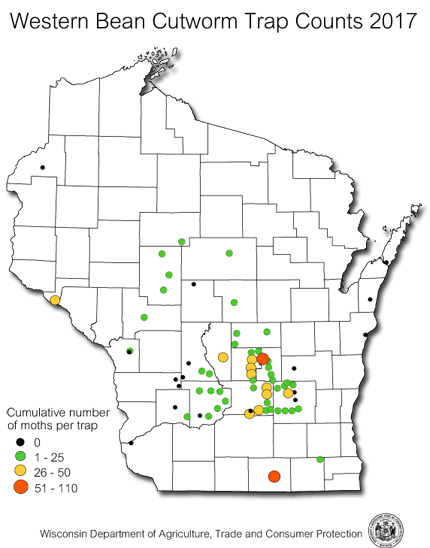
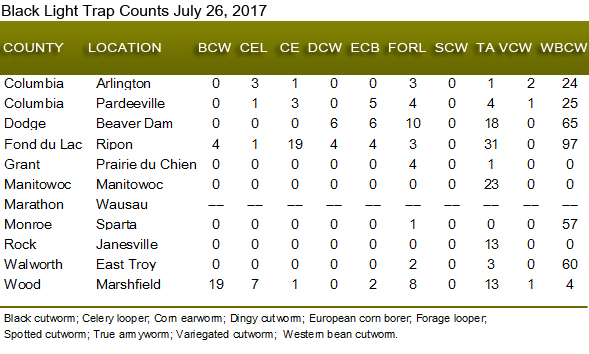
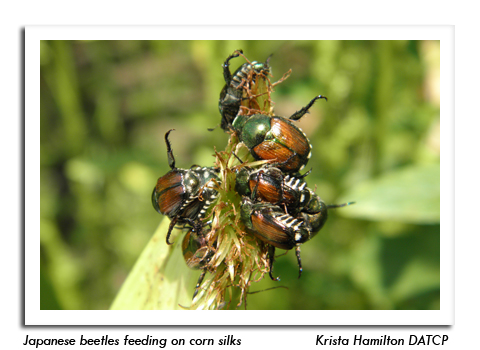
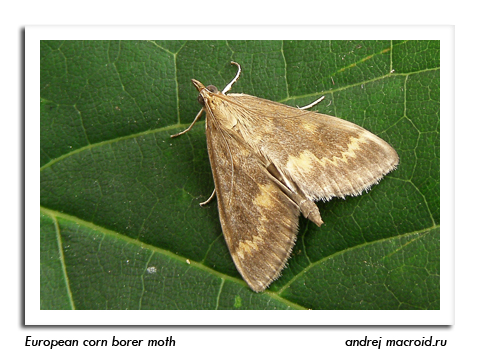
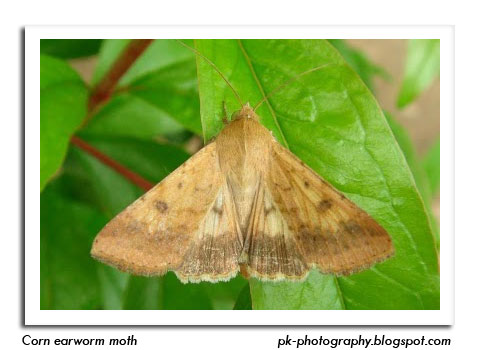
|
|
|